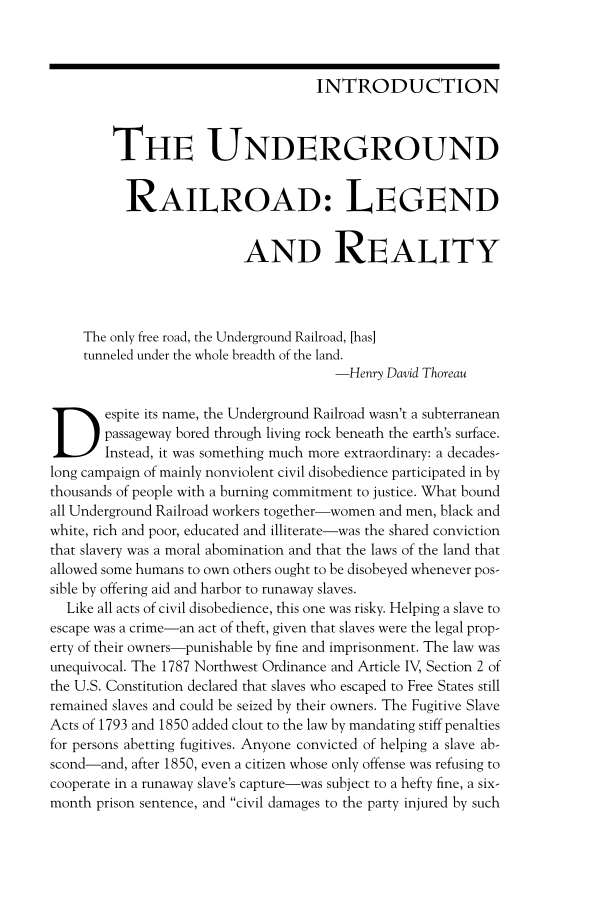INTRODUCTION THE UNDERGROUND RAILROAD: LEGEND AND REALITY The only free road, the Underground Railroad, [has] tunneled under the whole breadth of the land. —Henry David Thoreau D espite its name, the Underground Railroad wasn’t a subterranean passageway bored through living rock beneath the earth’s surface. Instead, it was something much more extraordinary: a decades- long campaign of mainly nonviolent civil disobedience participated in by thousands of people with a burning commitment to justice. What bound all Underground Railroad workers together—women and men, black and white, rich and poor, educated and illiterate—was the shared conviction that slavery was a moral abomination and that the laws of the land that allowed some humans to own others ought to be disobeyed whenever pos- sible by offering aid and harbor to runaway slaves. Like all acts of civil disobedience, this one was risky. Helping a slave to escape was a crime—an act of theft, given that slaves were the legal prop- erty of their owners—punishable by fi ne and imprisonment. The law was unequivocal. The 1787 Northwest Ordinance and Article IV, Section 2 of the U.S. Constitution declared that slaves who escaped to Free States still remained slaves and could be seized by their owners. The Fugitive Slave Acts of 1793 and 1850 added clout to the law by mandating stiff penalties for persons abetting fugitives. Anyone convicted of helping a slave ab- scond—and, after 1850, even a citizen whose only offense was refusing to cooperate in a runaway slave’s capture—was subject to a hefty fi ne, a six- month prison sentence, and “civil damages to the party injured by such
Document Details My Account Print multiple pages
Print
You have printed 0 times in the last 24 hours.
Your print count will reset on at .
You may print 0 more time(s) before then.
You may print a maximum of 0 pages at a time.

















































































































































































































































